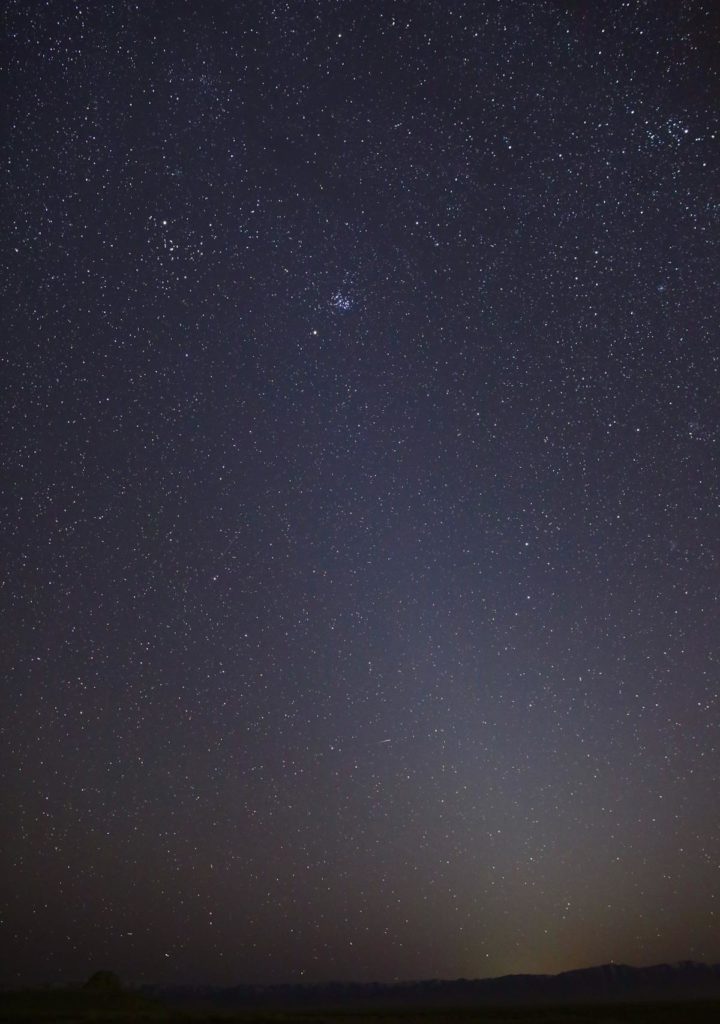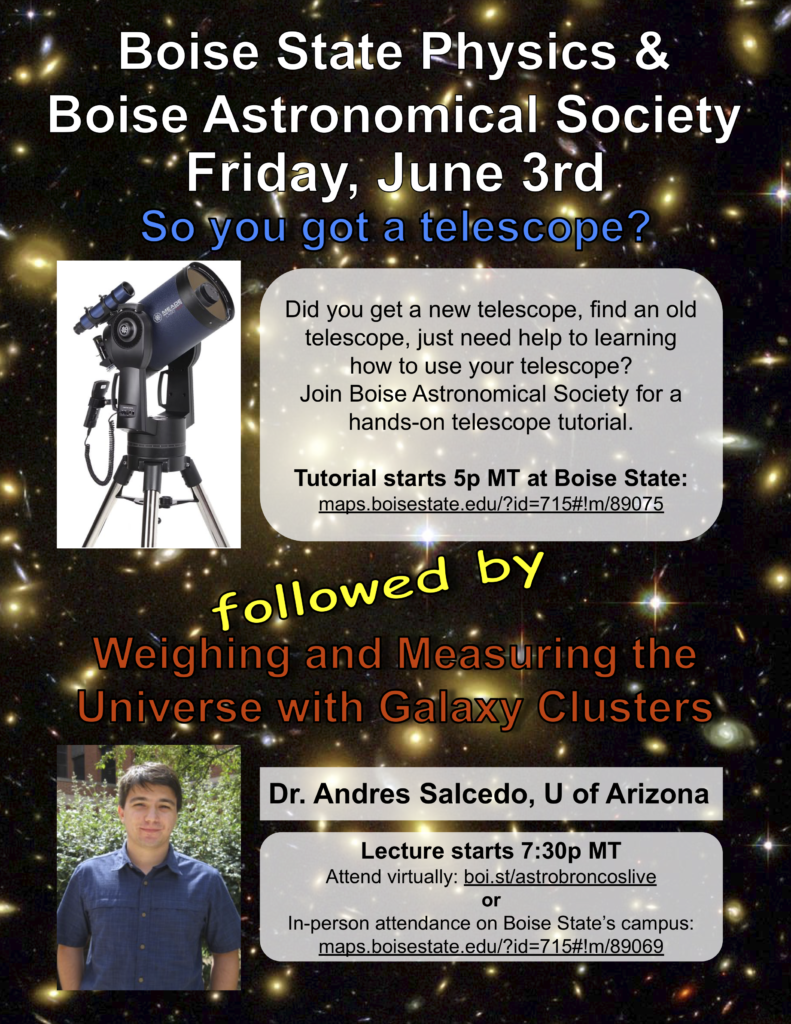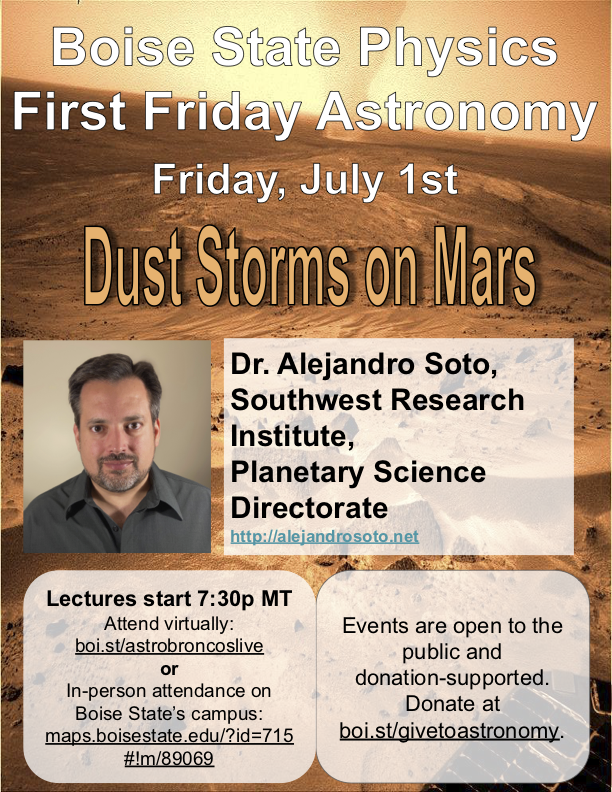First Friday Astronomy

(This post previously ran in 2021 May but has been updated.)
Summer is the prime stargazing season. Venture out under the crystal Moon to watch Scorpius chase Orion from the sky. But if you stay within Boise’s city limits, you may find it harder to see some of your favorites. As Boise grows, so too does its footprint in the sky. However, there are many places in Idaho largely unmarred by the glare of municipal growth.
Continue Reading
In 1986, superstars Lionel Richie and Michael Jackson won a Grammy for “Best Song of the Year” for “We are the World“, a single recorded to support the African charity USA for Africa (https://usaforafrica.org/) to provide food and relief aid to starving people in Africa, specifically Ethiopia where a famine raged. With sales in excess of 20 million copies, it is the eighth-bestselling physical single of all time, and it immediately generated 60 million dollars.
But 1986 also marked the 300th anniversary of one of the most popular science books of all time, Conversations on the Plurality of Worlds. And a NASA mission just over the horizon may turn the sci-fi conversations about alien life from this classic pop-sci book into science fact.
Continue ReadingWant to learn more about life’s chemical story? Join Boise State Physics for our First Friday Astronomy event on Fri, Sep 2 at 7:30p MT when we will host University of South Florida’s Prof. Matthew Pasek. Attend in-person (https://maps.boisestate.edu/?id=715#!m/89075) or virtually (boi.st/astrobroncoslive).
Like the musical “Hamilton”, the James Webb Space Telescope lives up to the hype. Already, astronomers have used it to discover galaxies older and more distant than ever before, and it’s only getting started. One of the astronomical processes JWST will elucidate is the formation of stars. Understanding star formation is critical if we want to answer questions about the origin of life on Earth and the possibility for life elsewhere in the universe. But even though scientists have been thinking about star formation since before the word “scientist” existed, some of the most basic questions about the process remain unanswered.
Continue ReadingJoin Boise State Physics on Friday, July 1st at 7:30p MT for our First Friday Astronomy event to hear Dr. Alejandro Soto of SwRI discuss the science of “Dust Storms on Mars”.
The presentation will be live-streamed and recorded at boi.st/astrobroncoslive.

Although our current understanding of gravity, the theory of general relativity, arose only one hundred years ago, scientists were speculating about exotic gravitational effects going back to before the word “scientist” even existed. Today, astronomers employ gravity in a variety of ways to study the cosmos, to look for planets outside our solar system and even to weigh some of the largest celestial bodies in existence. These measurements have shed light on some of the darkest of astronomical mysteries.
Continue Reading
First Friday Astronomy/So You Got a Telescope? Event – 2022 June 3
Did you get a new telescope, find an old telescope, just need help to learning how to use your telescope? Join Boise Astronomical Society for a hands-on telescope tutorial. Tutorial starts 5p MT at Boise State: maps.boisestate.edu/?id=715#!m/89075.
followed by
Weighing and Measuring the Universe with Galaxy Clusters – Dr. Andres Salcedo, U of Arizona
Lecture starts 7:30p MT
Attend virtually: boi.st/astrobroncoslive or In-person attendance on Boise State’s campus: maps.boisestate.edu/?id=715#!m/89069
Watch Dr. Salcedo’s talk!
Jupiter’s moon Io has long been famous for its sky-splitting volcanic eruptions, powered by Jupiter’s tidal gravity. But strange ridge-like features in regions adjacent to the volcanoes have raised questions since their discovery — What are they? How are they formed? Are they somehow related to the volcanoes? A recent study has argued that, even under Io’s whisper-thin atmosphere, these ridges are probably vast dune fields. This new discovery adds yet another world to our growing trove of worlds where aeolian processes operate.
